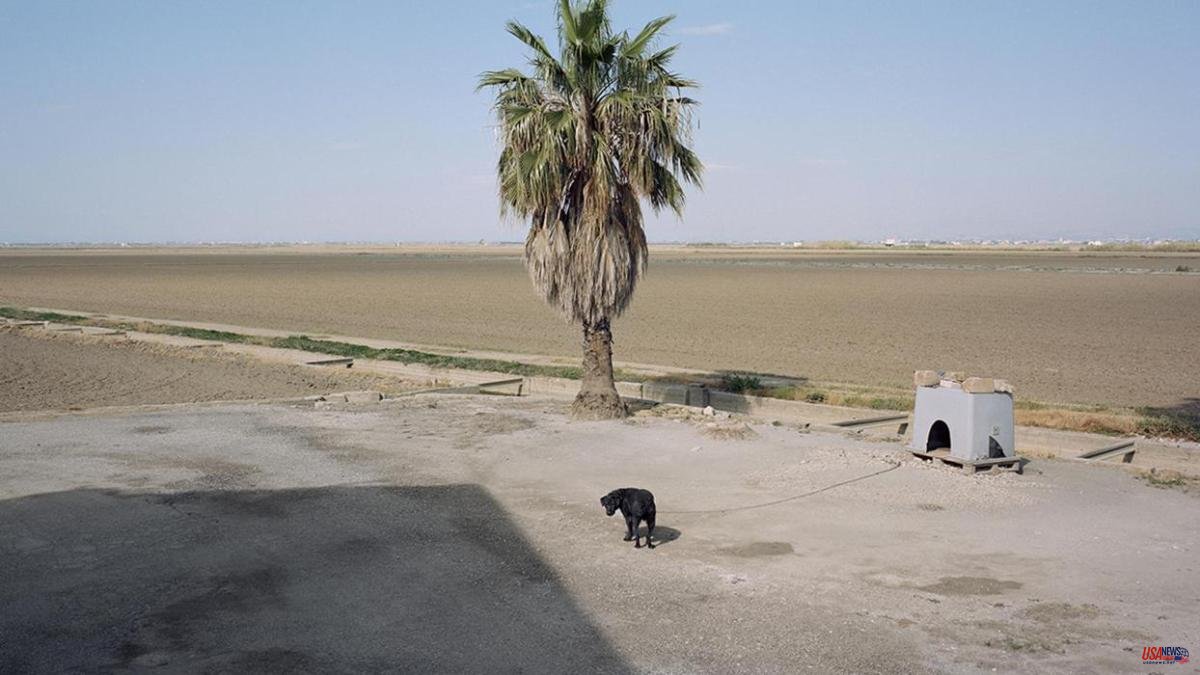Tied to a chain or locked up in a small plot behind a fence, without freedom of movement, condemned to loneliness and the boredom of perpetual waiting, and despite everything, submissive, ready to wag their tails every time they see their friend appear. owner. Such are the dogs that the photographer Txema Salvans (Barcelona, 1971) has portrayed on the Mediterranean coast for his latest photobook, The Waiting Game III (RM publishing house), with which he closes a splendid trilogy around the idea of waiting.
In the first installment, from 2013, Salvans photographed prostitutes waiting in abandoned industrial estates and empty highways, under a scorching sun, for the arrival of clients. Five years later, the series continued with solitary fishermen who, semi-hidden among reeds and bushes, killed the hours casting their rods in impossible places: ditches, canals, stunted streams, ports or swamped puddles from which it seems impossible for anything alive to emerge. . “I don't think they had any hope of a fish biting either. They were there not to appear unemployed, to escape from their families, to be alone, to stop being and thinking, to escape from their own lives...", he recalls.
"We live installed in dystopia", adds the photographer, for whom if in the case of prostitution it is a "social dystopia and that of fishermen, the dystopia of self-awareness, that will to want to erase ourselves from the world at all costs ”,the dog project has to do with how we relate to the environment. “We like nature, but as long as it is a tame nature. And the dog is a good example of this. It comes from the wolf but we have been molding it at our convenience, selecting the puppies that best suited it, until we turned it into an absolutely submissive being. If you kick a cat, you will never see it again in life, but the bond between the dog and its owner is one of total submission.
In Salvans's portraits, the dogs are guarding an industrial complex, a farm, an auto salvage yard, or a luxury villa. Except for the image that closes the book, there is no human presence, but the photographs speak more of their owners than of the dogs, some of them tied to a chain so short that it prevents them from reaching the shaded area. Forced to always travel the same diameter, where the grass no longer grows from kicking so much. “I think it was Gandhi who said that the greatness of a nation and its moral progress can be judged by the way its animals are treated. And these images portray us as a society, ”he points out.
Salvans, a biologist by training with an anthropologist's gaze, found them at the edge of the roads on the shores of the Mediterranean, which is where he intuitively goes to look for documents that help him "talk about us, about the human condition," either through of the degrading waiting of prostitutes, that of men and women turned into fishermen "so as not to think" or that of those mistreated dogs that even with their backs arched by pain do not hesitate to lick the hand of their abuser.
Like every Holy Week for almost twenty years, the photographer has climbed back on board his Westfalia van with which, until the heat sets, he will cross Spain from Port Bou to Algeciras. This time his objective is the gas stations. But the modus operandi, like when he portrayed leisure in surreal and dilapidated spaces on the coast (Perfect Day) or the Sunday people who frequent the parking lot of a large commercial area, is always the same. Around noon, when the light is starker and reinforces the feeling of desolation, he climbs onto the roof of the vehicle that serves as his dining room and bedroom, and, like a fisherman, he too waits patiently, with his senses alert, until that reality sets in front of him.
He works with a plate camera mounted on a tripod and his way of camouflage is a reflective vest that gives him an air of surveyor that attracts attention but does not arouse the slightest interest. “In my photography -he concludes- there are never fireworks, but rather that background noise with which we have become so accustomed to living together that we no longer detect it as a problem. We are installed in dystopia”.













